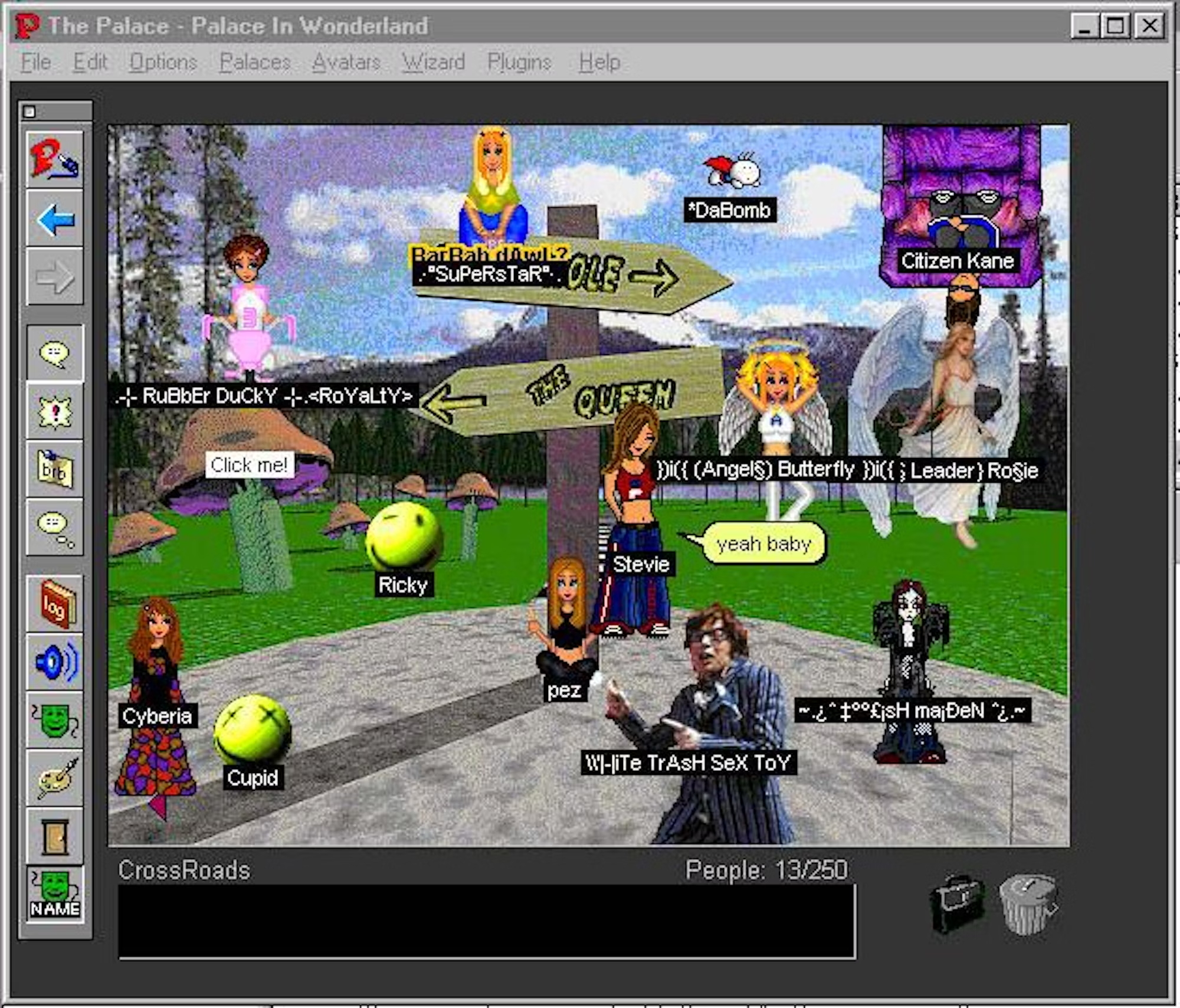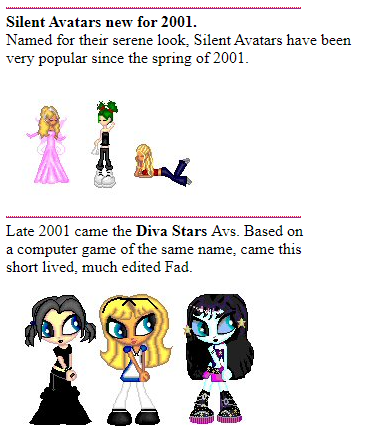History
The Palace, where it all began
The history of Dolls, also known as dollz or pixel dolls, can be traced back to the late 1990s and early 2000s, the concept originated from an early web chat room program called The Palace, on this program each room or server were called a ‘palace’ and users could use graphical avatars to represent themselves and interact with one another.
Palace’s first avatars were generic smiley faces — essentially, 3D-modelled tennis balls with faces instead of seams. [...] Early on after The Palace’s release, players stuck with smiley faces wearing hats or glasses. But in 1996, things changed.
The earliest recorded paper doll–styled avatar popped up in the summer of ‘97, Bumgardner said. Called “little people,” these dolls were slouched over with hair dangling in front of their eyes. They often wore baggy pants and held skateboards or surf boards. Clothing varied — users edited avatars using The Palace’s prop editor.
“I have no idea who deserves credit. [...] What I do remember is that suddenly they were everywhere. When they first hit, for a few days, that was all you saw.”

Evolution and Mutation




From Dollz to Dolls
As the internet and digital art continued to evolve, so did Dollz. Artists began experimenting with animation using multiple frames to depict movements like blinking or waving, some artists also explored more advanced techniques, incorporating shading, gradients, and additional details into their Dollz.
Using dollmakers started to become insufficient and so people began drawing their own dolls from scratch, sometimes creating ‘bases’ in the process, bodies that could be used to create your own doll as long as you credited the original base creator.
Instead of the initial simple cartoon style, these new dollz were highly detailed and became an art form on its own. To distinguish them from the internet fad these artists started calling it ‘dolls’ instead of ‘dollz’. Dolls communities flourished from the 2000s to 2010’s, with dedicated websites, forums and online galleries focused on sharing and showcasing creations. Images made on dollmaker or edited from somebody else's creation were not allowed on these communities, only 100% original dolls or made on a base with the proper credit were permitted, further distinguishing the art form from the dollmaker creations.